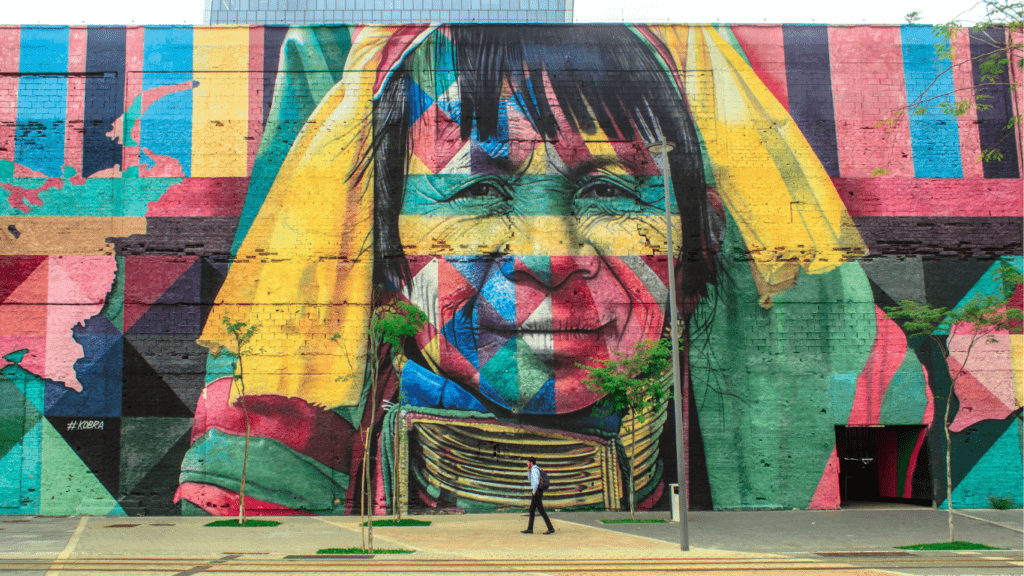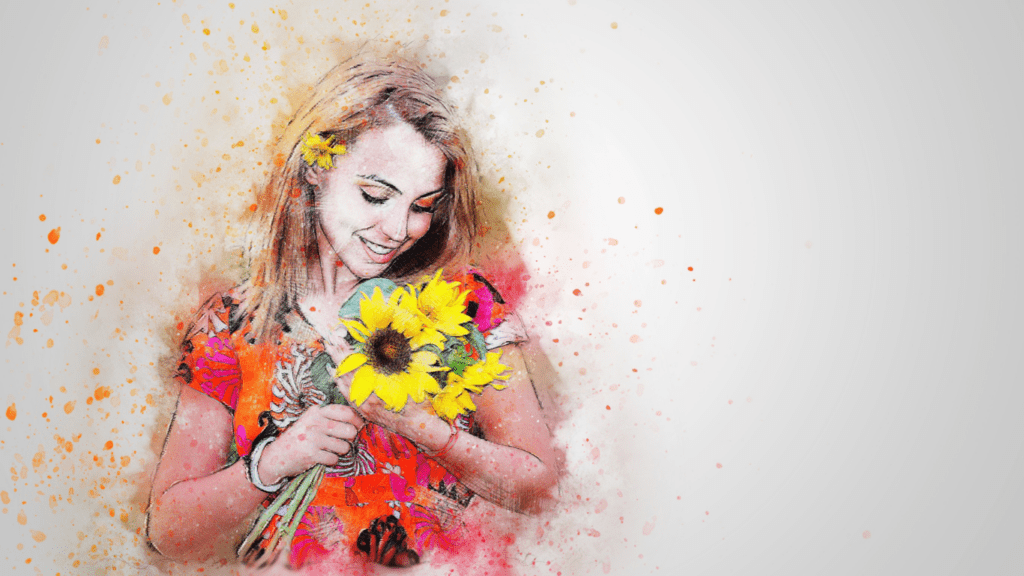What Is Mixed Media Art?
Mixed media art involves combining different art forms and materials in a single artwork. It juxtaposes techniques like painting, drawing, sculpture, and digital art. This type of art breaks traditional boundaries, merging various artistic languages to create something unique.
Using different materials in one piece enhances the texture and depth. For example, combining acrylic paint with collage elements can add dimension. Artists often use found objects, textiles, and digital elements to diversify their work.
The appeal of mixed media lies in its flexibility. The artist’s imagination defines what’s possible. Whether weaving fabric into a canvas or integrating electronic components, the scope is vast. The process fosters innovation, inviting new ways to see and create.
Mixed media encourages experimentation. An artist might start with a pencil sketch, overlay it with watercolors, and finish with ink details. This layering not only enriches the visual experience but also adds meaning and context to the artwork.
Ultimately, mixed media art is about breaking norms and exploring creativity. With no strict rules, it allows endless possibilities.
History Of Mixed Media Art
Mixed media art traces its roots back to the early 20th century. Artists began to explore this form during movements like Cubism and Dadaism. For example, Pablo Picasso and Georges Braque incorporated collage elements in their works. This experimentation laid the groundwork for mixed media techniques. By the 1950s, artists like Robert Rauschenberg pushed these boundaries further by integrating non-traditional materials such as newspaper clippings and found objects. Rauschenberg’s “Combines” blurred the lines between painting and sculpture.
The 1960s and 1970s saw further evolution in mixed media art. Artists like Andy Warhol used silkscreen printing alongside paint, creating iconic pop art pieces. This period also witnessed the rise of feminist art where practitioners, like Judy Chicago, used mixed media to challenge societal norms about gender. Their works often included textiles, ceramics, and performance elements, setting a new precedent for mixed media applications.
More contemporary developments in mixed media art emerged in the late 20th and early 21st centuries. Artists embraced digital technology, integrating software and electronic components into their pieces. This blending of the digital and physical realms continues to expand the boundaries of mixed media art, making it an ever-evolving field.
Techniques And Materials
Mixed media art brings countless techniques and materials together, offering artists endless possibilities for creativity and innovation. Let’s delve into the basics of these techniques and materials.
Basics Of Mixed Media Techniques
Mixed media techniques often involve layering, collaging, and texturing to create depth and visual interest. One basic method is layering, where I apply different materials like paper, fabric, and paint in successive layers. Collaging involves adhering pieces of photos, newspaper, or magazine cutouts to a surface to create an integrated image. For texturing, I incorporate elements like sand, gel mediums, or textured papers to add a physical dimension.
Common Materials Used
Mixed media art thrives on the diversity of materials. Common materials include:
- Acrylic Paints and Watercolors: Fast-drying and versatile.
- Inks: Adds fine lines and details.
- Paper and Fabric: Basis for layering and collaging.
- Found Objects: Such as buttons, beads, and leaves for textural variety.
- Digital Elements: Includes printed images and digital enhancements.
Combining Traditional And Digital Art
Combining traditional and digital art expands creative boundaries. I use Traditional Techniques like painting and drawing to set the base layer. Digital Tools such as software and tablets help refine and manipulate images, offering new avenues for experimentation. By integrating both, I achieve a unique blend that enhances my art, making it stand out in contemporary mixed media work.
Benefits Of Mixed Media Art

Mixed media art offers a range of benefits, making it an appealing choice for artists looking to expand their creative horizons. Two key benefits are its ability to encourage creativity and provide versatility and flexibility.
Encourages Creativity
Mixed media art stimulates creativity by allowing artists to experiment with various materials and techniques. When using diverse elements such as paint, collage, and digital tools, artists can break free from traditional constraints and explore new ways of expression. This freedom leads to the discovery of unique artistic styles.
Versatility And Flexibility
Mixed media art boasts versatility and flexibility, giving artists numerous ways to combine disparate art forms. Whether layering textures or integrating digital components, mixed media offers endless possibilities. This adaptability lets artists tailor their techniques to suit different themes, project requirements, and personal preferences.
Famous Mixed Media Artists To Know
Mixed media art has been shaped by many influential artists. Their groundbreaking approaches have inspired countless generations.
Henri Matisse
Henri Matisse, a French artist, is widely recognized for his innovative work in mixed media. He pioneered “cut-outs” in the 1940s, which involved cutting painted paper into shapes and arranging them into vibrant compositions. Matisse’s “Blue Nudes” series exemplifies this technique.
Robert Rauschenberg
Robert Rauschenberg, an American artist, significantly impacted mixed media art. He’s famed for his “Combines” in the 1950s, where he merged non-traditional materials and objects into his paintings. Pieces like “Monogram,” featuring a taxidermied goat, showcase Rauschenberg’s boundary-pushing creativity.
Getting Started With Mixed Media Art
Exploring mixed media art opens endless creative possibilities. This section covers essential tools and beginner projects to kick-start your journey.
Essential Tools
I suggest having a diverse toolset for mixed media art. Basic tools, such as brushes, palette knives, and sponges, are indispensable for various techniques. Mixed media artists often include:
- Brushes: Various shapes and sizes for different effects.
- Cutting Tools: Scissors and craft knives for precise cuts.
- Adhesives: Glue sticks and liquid adhesives for layering.
- Surfaces: Canvas, paper, and wood panels for different bases.
- Media: Acrylic paints, inks, and pastels for varied textures.
Beginner Projects
Starting with manageable projects builds confidence. Here are some beginner-friendly project ideas:
- Collage: Combine magazine clippings, photos, and paper scraps to create visual stories.
- Textured Painting: Use acrylic gels and pastes to add dimension.
- Mixed Media Journals: Document ideas and inspirations using sketches, text, and collaged elements.
- Altered Objects: Transform everyday items like bottles or boxes using paint, fabric, and found objects.
Experimenting with these projects provides a solid foundation in mixed media.





